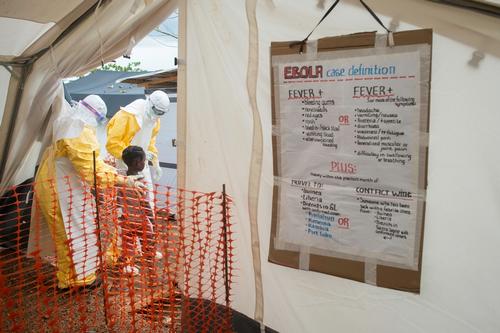What is Ebola?
Ebola is one of the world’s most deadly diseases. It is a highly infectious virus that can kill up to 90 percent of the people who catch it, causing terror among infected communities.
How probable is death from Ebola?
The case-fatality rate varies from 25 to 90 percent, depending on the strain. There are five different strains of the Ebola virus: Bundibugyo, Ivory Coast, Reston, Sudan and Zaire, named after their places of origin. Four of these five have caused disease in humans. While the Reston virus can infect humans, no illnesses or deaths have been reported.
When was Ebola first seen?
Ebola first appeared in 1976 in simultaneous outbreaks in Nzara, Sudan, and in Yambuku, Democratic Republic of Congo. The latter was in a village situated near the Ebola River, from which the disease takes its name.
How is Ebola transmitted?
In areas of Africa, infection has been documented through the handling of infected chimpanzees, gorillas, fruit bats, monkeys, forest antelope and porcupines found dead or ill in the rainforest.
Ebola can be caught from both humans and animals. It is not an air-borne disease. Human to human transmission occurs through close contact with blood, secretions, or other bodily fluids of an Ebola-infected person.
Direct contact with dead bodies, such as at funerals, is one of the main ways the disease is transmitted. Funerals are a significant practice in the communities affected by this outbreak and involve people washing and touching the body, expressing their love for the deceased. In the last hours before death, the virus becomes extremely virulent and therefore the risk of transmission from the dead body is much higher. For these reasons, ensuring safe burials is a crucial part of managing the outbreak
Healthcare workers have frequently been infected while treating Ebola patients. This has occurred through close contact with the patients without the use of gloves, masks or protective goggles.
What are the symptoms?
Early on, symptoms are non-specific, making it difficult to diagnose. The disease is often characterised by the sudden onset of fever, feeling weak, muscle pain, headaches and a sore throat. This can be followed by vomiting, diarrhoea, rash, impaired kidney and liver function and, in some cases, haemorrhagic symptoms. This includes nosebleeds, bloody vomit, bloody diarrhoea, internal bleeding and conjunctivitis. However, these haemorrhagic symptoms are seen in less than 50 percent of cases.
How long after exposure do the symptoms occur?
Symptoms can appear from two to 21 days after exposure.
How is Ebola diagnosed?
Diagnosing Ebola in an individual who has been infected for only a few days is difficult, because the early symptoms, such as red eyes, muscle pain and onset of fever are nonspecific to Ebola infection and are seen often in patients with more commonly occurring diseases.
However, if a person has the early symptoms of Ebola and there is reason to believe that it should be considered, the patient should be isolated and public health professionals notified. Samples from the patient can then be collected and tested to confirm infection.
How is Ebola treated?
There is no specific treatment or vaccine available that has proven efficacy in humans and is registered for use in patients. Experimental drugs and vaccines are now being considered for use in the frame of accelerated clinical trials. Standard treatment for Ebola is limited to supportive therapy. This consists of hydrating the patient, maintaining their oxygen status and blood pressure, providing high quality nutrition and treating them with antibiotics for any complicating infections. Supportive treatment can help the patient survive longer, and the extra time may just be what the patient’s own immune system needs to start fighting the virus.
Once a patient recovers from Ebola, they are immune to the strain of the virus they contracted.
When is an Ebola outbreak officially over?
An Ebola outbreak is officially considered at an end once 42 days have elapsed without any new confirmed cases.
How do health workers protect themselves from infection?
Ebola patients need to be treated in isolation by staff wearing protective clothing. One of MSF’s main priorities in an Ebola outbreak is to train health staff to reduce the risk of transmission while caring for patients. MSF puts in place extremely rigorous safety procedures to ensure that no health workers have unprotected exposure to the virus.
MSF treatment centres are designed to ensure the safest possible working environment for our staff. There is sufficient space in between patients, clear separation between high-risk and low-risk areas, sufficient lighting, secure waste management and regular cleaning and disinfection of the wards. We have administrative controls, which restrict the number of people that can go inside the high-risk area, which limits the staff who could be potentially exposed. Only those staff that need to go in are allowed to go and we restrict how long people can stay inside for.
Our international staff members are rotated every 4-6 weeks to ensure they are not too tired, which helps reduce risk. Our staff always work in pairs in a buddy system. They look out for each other to make sure the other is not making any mistakes or is too tired. We try wherever possible to administer oral therapy rather than injections, which reduces the risk of needle stick injuries, and also limit the number of blood tests.



